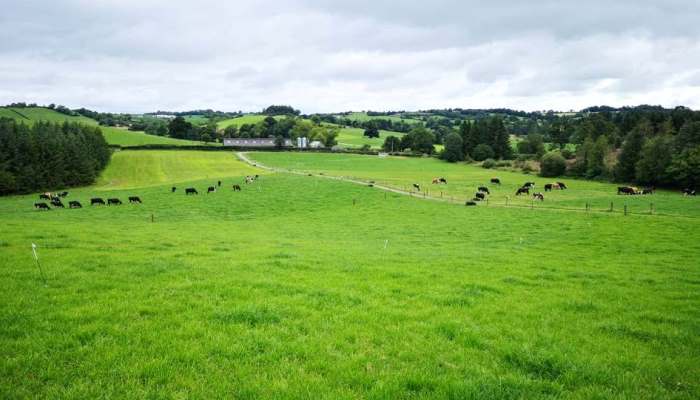16 October 2020
Ballyhaise Extended Grazing Trial

Donal Patton, Dairy research technologist, has summarised the trends emerging from the final year of a four-year trial in Ballyhaise. The trial looked at extended grazing on heavy soils in Northern regions comparing two grazing season lengths and two stocking rates.
2020 is the final year of a four-year grazing trial in Ballyhaise looking at extended grazing on heavy soils in Northern regions. Within this trial we set up two grazing season lengths (average 205 day: Mid-Mar to Mid-Oct and extended 270 days: Mid-Feb to Mid-Nov) with 2 stocking rates (2.5 LU/Ha & 2.9 LU/Ha).
The objective was to identify the impact of extended grazing on the pasture, the cow and the overall economics of milk production. Donal Patton has summarised the trends emerging from the trial:
- Grass production is similar across all treatments (14.5 T DM /Ha), however extending grazing increases the proportion of grass utilised as grazed grass. The 2.5 LU/Ha extended grazing system is 90% self-sufficient for silage
- Detailed measurements of poaching and soil compaction were taken in two years of the trial but have not been analysed yet. However extended grazing had no impact on grass production for better or worse
- Extended treatments needed 1.2 – 1.4 T DM silage per cow (30 – 40% high quality silage 75DMD+). The average treatment needed additional 0.6 to 0.8 T DM silage per cow of high quality silage
- 150 kg extra concentrate had to be fed to the average groups to maintain performance, with higher crude protein % in early spring to account for lack of grazed grass in the diet.
- Extended treatments produced 20kg of milk solids per cow more than average treatments in 2019, however in 2017 and 2018 the difference in production was smaller at 10kg milk solids per cow
- Preliminary results indicate that each extra day at grass is worth €2.30 per cow
- Building grass in August and holding sufficient cover over winter coupled with good grazing infrastructure are the main drivers of success. These strategies are not widely practiced in the region.
